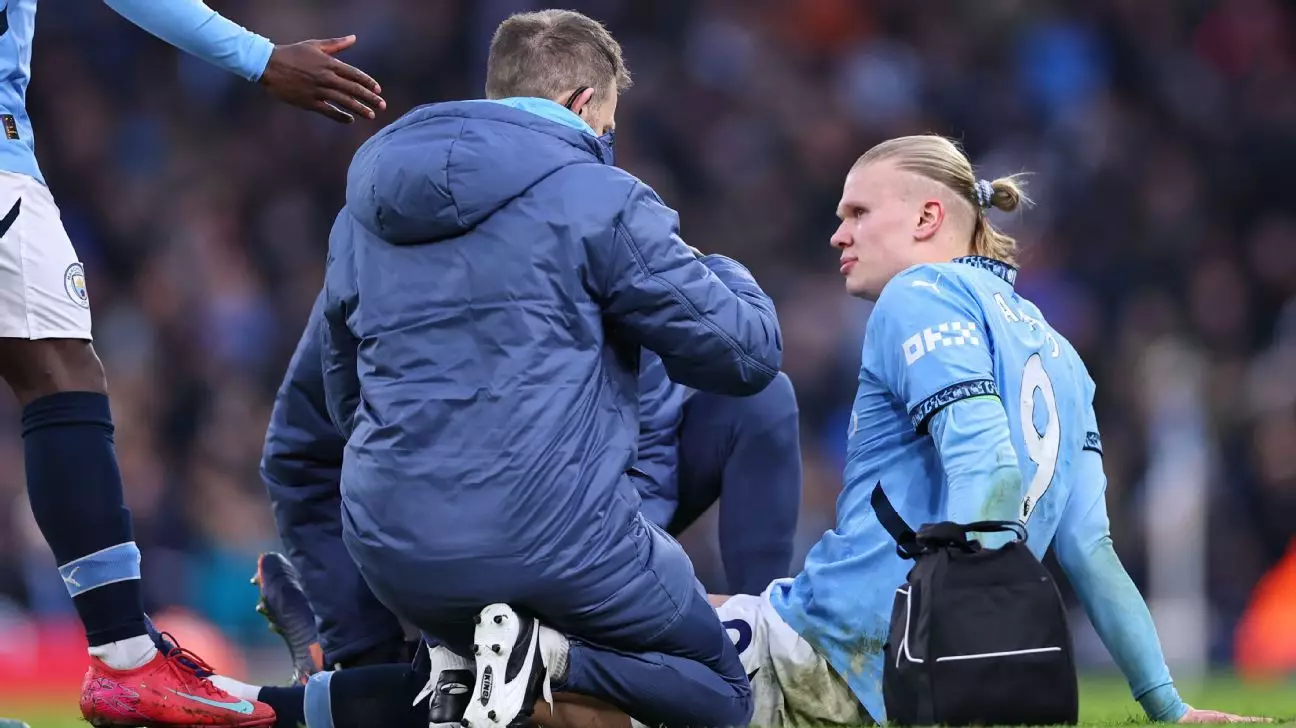In the ever-dynamic world of football, injuries and suspensions can shift the balance of power in unprecedented ways. As we approach the next round of Premier League action, team managers, players, and fans alike must take stock of who is fit, who is recuperating, and who will be sidelined. This exploration aims to provide crucial insights into player availability, helping you shape your Fantasy Football strategy.
Injuries are an unfortunate yet inevitable part of competitive sports, not least in high-paced leagues like the Premier League. Various teams are grappling with the effects of missing players, impacting their tactical setups and overall performance on the pitch. Clubs must manage these absences with care as they prepare for upcoming fixtures. As such, understanding player status—whether they are ruled out due to injury, in the race against time to reclaim fitness, or suspended—becomes essential for team formations.
Take Leicester City, for example. As they prepare to face Brentford at the King Power Stadium, the atmosphere is tinged with uncertainty. Key players like Odsonne Édouard and Ricardo Pereira are confirmed out, leaving the Foxes scrambling for resources. This situation creates an opportunity for second-choice players to step into crucial roles; however, it also poses a significant risk to club performance.
Similarly, teams like Everton and Manchester United are facing their own trials. Everton, with prolific attackers like Dominic Calvert-Lewin out due to hamstring injuries, will need to creatively plug the gaps. This is a common challenge teams in the league face—balancing short-term goals with squad depth and cohesion.
Compilation of the expected lineups can offer a window into how clubs might respond to their injury woes. Managers often adjust their tactics in response to missing players while aiming to maintain optimal performance levels. For instance, the expected lineup for Arsenal against West Ham United indicates a reliance on younger talents as the club navigates through injuries to established stars like Gabriel Jesus and Bukayo Saka.
When a player succumbs to injury, it can serve as a catalyst for a tactical transformation within a team. Arsenal’s adaptation might mean introducing players who bring pace or creativity missed by absent stars. Therefore, recognizing who steps onto the field in these scenarios not only adds layers to your fantasy football selections but also offers insights into how a team’s style might shift.
A notable mention is the showdown between Manchester City and Liverpool at the Etihad Stadium. City is facing key absences, namely Erling Haaland and Rodri. The question then arises: how will Pep Guardiola orchestrate his formations in light of this? Will he opt for a more fluid, attacking approach without traditional towering figures? Tactical changes will not merely impact results; they will significantly influence player performance in fantasy leagues.
While injuries tend to dominate discussions about player unavailability, suspensions can also dictate the course of a match. Players who find themselves in the referee’s book too often may miss vital games, changing the landscape not just for their own team but for the opposition as well. For clubs not blessed with extensive depth, such suspensions can prove catastrophic.
Take Chelsea’s situation as an example; they must navigate their upcoming clash against Aston Villa while missing key contributors, including Mykhailo Mudryk. The absence of influential players alters team dynamics, as remaining players must elevate their games or face the consequences of missed opportunities.
For fantasy managers, understanding the implications of injuries, suspensions, and expected lineups is crucial. The stakes are higher in this environment, where player performance is tied to a manager’s overall success. Therefore, being vigilant about player updates from league representatives can enable managers to make timely substitutions or strategic changes, capitalizing on emergent player opportunities.
It is often the case that a rotational player stepping in for an injured starter can surprise everyone with a standout performance. Conversely, overestimating a returning player’s readiness might lead to disappointing points. The balance lies in research, keen observation of training reports, and an understanding of player fitness levels, which can significantly influence outcomes during the match weeks.
As football evolves, the need for spectators and managers alike to respond to uncertainties has never been more evident. Whether it is managing injuries or navigating suspensions, each decision has the potential to shake up the usual order. By remaining astutely aware of the intricacies surrounding player fitness and lineup expectations, you can enhance your own experience—be it as a fan, manager, or fantasy league participant—in the vast and unpredictable world of Premier League football.
In the end, football is more than a game; it’s a complex interplay of physical prowess and strategy, with every twist and turn demanding immediate attention and tactical shifts. Understanding these elements is critical not just for fans, but for anyone who cherishes the beautiful game.
